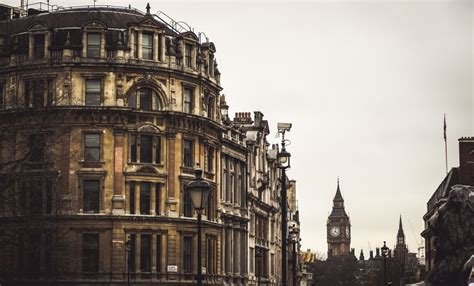Are you a history enthusiast? Do you find yourself drawn to the rich heritage and remarkable stories that have shaped London over the centuries? If so, you’re in for a treat. In this blog post, we will take a fascinating journey through the historical significance of London, exploring iconic landmarks, neighborhoods, and streets that have stood the test of time. We’ll delve into London’s royal legacy, uncover its ancient Roman origins, and revisit the impactful history of World War II. Whether you’re a local looking to deepen your appreciation for the city’s heritage or a traveler eager to immerse yourself in London’s historical tapestry, this blog post is your ultimate guide to discovering the captivating history that lies within the heart of the capital. So, grab your walking shoes and get ready to embark on a historical adventure through London’s compelling past.
The Historical Significance of London
London is a city steeped in history, with a rich and diverse past that has shaped the way it looks and feels today. From its earliest roots as a Roman settlement to its development into a bustling metropolis, London’s historical significance is evident in the iconic landmarks, neighborhoods, and streets that dot the cityscape.
One of the most iconic historical landmarks in London is the Tower of London, a medieval fortress with a long and bloody history. This UNESCO World Heritage Site has served as a royal palace, prison, and treasury, and is home to the Crown Jewels of England. The Tower Bridge is another symbol of London’s historical significance, with its iconic Victorian Gothic design and imposing structure.
London’s historical neighborhoods and streets also play an important role in showcasing the city’s rich heritage. From the cobbled streets of Covent Garden to the elegant Georgian townhouses of Mayfair, each area has its own story to tell and adds to the historical tapestry of the city.
London’s royal legacy is another key aspect of its historical significance, with the Buckingham Palace being the residence of the British monarch. The palace has a fascinating history and is open to the public for tours, allowing visitors to step back in time and learn more about the royal family’s heritage.
Exploring Iconic Historical Landmarks
London is a city steeped in history, with iconic landmarks that have stood the test of time. From the medieval Tower of London to the modernist masterpiece of the Shard, the city is a treasure trove of historical sites waiting to be discovered.
One of the most famous landmarks in London is the Tower Bridge, with its towering structure and intricate design. Built over 125 years ago, it remains an iconic symbol of the city, offering breathtaking views of the River Thames.
Another must-see historical landmark is the British Museum, home to a vast collection of art and artifacts from around the world. From the Rosetta Stone to the Elgin Marbles, the museum is a treasure trove of ancient history.
For those interested in royal history, a visit to Buckingham Palace is a must. The official residence of the British monarch, the palace is a symbol of the city’s rich regal heritage. The Changing of the Guard ceremony is a popular attraction, offering a glimpse into the pomp and pageantry of British royalty.
London’s Historical Neighborhoods and Streets
When it comes to exploring the history of London, it is impossible to overlook the significance of its historical neighborhoods and streets. From the cobblestone alleys of the East End to the grand avenues of Mayfair, each corner of the city is steeped in stories of the past, offering a glimpse into the rich tapestry of London’s history.
One of the most iconic neighborhoods in London is the East End, known for its colorful past as a working-class area and later as a hub of creativity and innovation. From the narrow lanes of Spitalfields to the bustling markets of Brick Lane, the East End is a melting pot of cultures and traditions that have been shaped by centuries of immigration and social change.
Another historical gem in London is the neighborhood of Bloomsbury, famous for its connection to the literary and intellectual elite of the 20th century. Walking down the leafy streets of Bloomsbury, one can’t help but be transported back to the days when the likes of Virginia Woolf and E.M. Forster roamed the area, leaving their indelible mark on its architecture and atmosphere.
And then there is the historic charm of Covent Garden, with its elegant piazza and hidden passages that harken back to the days when it was a vibrant fruit, flower, and vegetable market. Today, Covent Garden is a mecca for shopping, dining, and entertainment, but its past as a bustling marketplace is still palpable in the air.
Delving into London’s Royal Legacy
London’s rich royal legacy is steeped in centuries of history, with the city having been the home of numerous monarchs and royal families throughout the years.
From the iconic Buckingham Palace to the majestic Tower of London, the city is dotted with landmarks that serve as a reminder of its regal past.
Exploring the royal legacy of London provides a fascinating glimpse into the city’s history and the lives of the royalty who have left their mark on it.
Visitors can delve into the opulent world of the royals by visiting historic palaces, attending royal ceremonies, and learning about the traditions and customs that have been upheld for generations.
Rediscovering London’s Ancient Roman Origins
London, the vibrant and bustling capital of the United Kingdom, is a city filled with a rich and diverse history. From its iconic landmarks to its charming neighborhoods, London has a story to tell at every turn. One aspect of the city’s history that often goes overlooked is its deep ties to ancient Rome, a period that left a lasting impact on the city’s architecture, culture, and identity.
When delving into London’s ancient Roman origins, it’s impossible to ignore the influence of one of the most famous structures in the world – the Roman wall. Built by the Romans around 200 AD, this wall once marked the boundaries of the ancient city of Londinium. Stretching for over two miles, the wall provided protection and security for the bustling Roman settlement and serves as a reminder of London’s ancient heritage.
Besides the wall, London is also home to a number of Roman artifacts and archaeological sites that offer a glimpse into the city’s early history. From the world-renowned British Museum, which houses an extensive collection of Roman artifacts, to the remains of a Roman amphitheater in the heart of the City of London, there are countless opportunities to rediscover London’s ancient Roman origins.
Exploring these ancient Roman origins not only provides a fascinating look into London’s past, but also highlights the enduring legacy of Roman influence on the city. From the layout of the streets to the architecture of its buildings, London’s Roman roots continue to shape the city’s identity and provide a compelling link to its ancient history.
Unearthing London’s World War II History
London’s involvement in World War II is a significant chapter in the city’s history, as it was a major target for bombing raids by the German Luftwaffe. The impact of the war on London can still be seen today, with many sites and landmarks bearing testament to the city’s resilience and determination during this tumultuous period.
One of the most iconic reminders of London’s World War II history is the Churchill War Rooms, an underground bunker where Prime Minister Winston Churchill and his government directed the war effort. The rooms have been preserved as a museum, giving visitors a glimpse into the tense and pivotal decision-making that took place during the war.
Another notable site is the Imperial War Museum, which houses a vast collection of artifacts and exhibits related to World War II. From military vehicles and aircraft to personal stories and testimonies, the museum provides a comprehensive look at the impact of the war on London and the rest of the world.
Visitors to London can also explore the city’s many air raid shelters, some of which have been restored and opened to the public. These shelters offer a sobering insight into the daily lives of Londoners during the war, as they sought refuge from air raids and bombings.
Frequently Asked Questions
What is the historical significance of London?
London has a rich historical significance as it has been a major settlement for two millennia, with its history going back to its founding by the Romans.
What are some iconic historical landmarks in London?
Some iconic historical landmarks in London include the Tower of London, Westminster Abbey, and the British Museum.
What are some of London’s historical neighborhoods and streets?
Some of London’s historical neighborhoods and streets include the City of London, Covent Garden, and Carnaby Street.
What is London’s royal legacy?
London has a deep royal legacy, with landmarks such as Buckingham Palace, the Royal Albert Hall, and the Kensington Palace showcasing the city’s connection to royalty.
What are London’s ancient Roman origins?
London was founded by the Romans, and evidence of its ancient Roman origins can still be seen in locations such as the London Wall and the remains of the Roman amphitheater.
How is London’s World War II history significant?
London played a crucial role in World War II, with historical sites such as the Churchill War Rooms, St. Paul’s Cathedral, and the Imperial War Museum preserving the city’s wartime history.
What are some lesser-known historical facts about London?
Some lesser-known historical facts about London include its association with the Great Fire of London in 1666 and its medieval architecture in the form of the Tower Bridge and the Leadenhall Market.


